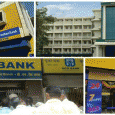
Socio-economic profile of students and cost of education are the key factors driving education finance. Technical/ professional courses including vocational courses entail higher fees as compared with general education which requires external financing. Furthermore, higher costs in privately-managed unaided colleges vis-á-vis government colleges also drive the requirement for external finance.
Currently, public sector banks (PSBs) account for almost 95% of the total bank lending to the education loan sector. On account of lower ticket size of loans being disbursed by the PSBs, majority of them are classified as priority sector lending and are unsecured in nature. The delinquencies in the PSBs in this segment have been higher as the loans are unsecured and are funded for graduation courses which have lower employment opportunities.
The distribution of the education loan portfolio by the banks shows large regional disparities. South India forms around 56% of the total education loan portfolio of the banks. Tamil Nadu and Kerala together account for 36% of the outstanding education loan portfolio. Other states which account for a major chunk of the education loan portfolio include Maharashtra, Karnataka, Andhra Pradesh and Telangana.
Education loans are skewed towards some regions on account of higher literacy levels and students’ inclination to pursue higher education, mainly technical courses. Availability of government schemes, access to finance and availability of ready educational infrastructure are other key aspects which skew the ratio.
As per the National Survey Sample Report 2014, average annual expenditure on technical/professional and vocational education was about nine times and four times that of general education. The fact that majority of the colleges in India are privately managed and unaided has led to higher requirement for finance from banks.
As per the National Survey Sample Report 2014, average annual expenditure on technical/ professional education in private aided and unaided colleges varied 1.5-2.5 times to that of government institutions. Students from lower socio-economic background are more likely to access bank finance. Growth of education loan portfolio has been low despite the opportunities. One major factor could be higher delinquencies experienced by banks and very few specialised lending institutions in this segment.
source:-.financialexpress.




